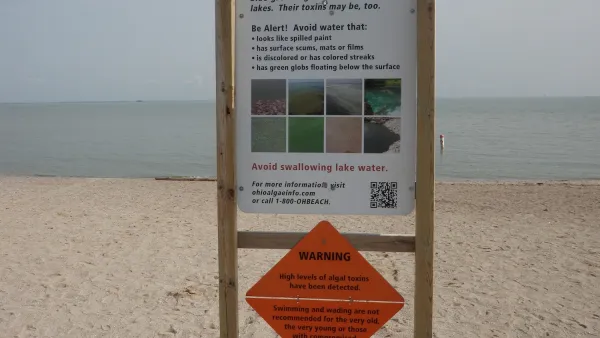California's Governor Jerry Brown unveils his administration's new plan in hopes of finally balancing the state's competing water interests. The cost? $14 billion over a decade.
California's broken water distribution system may finally have a fix, so says Governor Jerry Brown. As reported by The New York Times' Felicity Barringer and Jennifer Medina, "[t]he $14 billion blueprint envisions both the physical and psychological re-engineering of California's plumbing, including the construction of twin 35-mile-long pipelines, each about as wide as a three-lane highway, that would tap river water from a more northerly, less polluted location. The pipelines would deliver the water straight to the conveyances in the south, largely replacing a system that pumps water from the murkier southern part of the 500,000-acre delta, disturbing the fragile ecosystem."
Ever-increasing water withdrawals and levee building have led to what one environmentalist called a "biological meltdown." At the same time, "Decisions in recent years by the federal Fish and Wildlife Service and the courts to ensure there is enough water for fish have led to water delivery cutbacks in drought years." With the majority of stakeholders poorly served by the current situation, there is hope Gov. Brown's new plan will finally justly balance ecological, political, scientific, and industrial needs.
But lacking are details for the new plan. "Although Ann Nothoff, California advocacy director for the Natural Resources Defense Council, is troubled by the lack of detail in the proposal, she believes, "The status quo is unacceptable."
Although key details of the estimated $14 billion plan were missing (ignoring essential elements such as how much water would go through the pipes and when and scientific goals for recovery of endangered and threatened fish), it's clear who will end up paying the tab. "Those who consume water will have to cover the cost of construction; buying land and creating new habitat will fall to the government," write Barringer and Medina.
FULL STORY: California Envisions Fix to Water Distribution

Planetizen Federal Action Tracker
A weekly monitor of how Trump’s orders and actions are impacting planners and planning in America.

Maui's Vacation Rental Debate Turns Ugly
Verbal attacks, misinformation campaigns and fistfights plague a high-stakes debate to convert thousands of vacation rentals into long-term housing.

Restaurant Patios Were a Pandemic Win — Why Were They so Hard to Keep?
Social distancing requirements and changes in travel patterns prompted cities to pilot new uses for street and sidewalk space. Then it got complicated.

In California Battle of Housing vs. Environment, Housing Just Won
A new state law significantly limits the power of CEQA, an environmental review law that served as a powerful tool for blocking new development.

Boulder Eliminates Parking Minimums Citywide
Officials estimate the cost of building a single underground parking space at up to $100,000.

Orange County, Florida Adopts Largest US “Sprawl Repair” Code
The ‘Orange Code’ seeks to rectify decades of sprawl-inducing, car-oriented development.
Urban Design for Planners 1: Software Tools
This six-course series explores essential urban design concepts using open source software and equips planners with the tools they need to participate fully in the urban design process.
Planning for Universal Design
Learn the tools for implementing Universal Design in planning regulations.
Heyer Gruel & Associates PA
JM Goldson LLC
Custer County Colorado
City of Camden Redevelopment Agency
City of Astoria
Transportation Research & Education Center (TREC) at Portland State University
Jefferson Parish Government
Camden Redevelopment Agency
City of Claremont



























